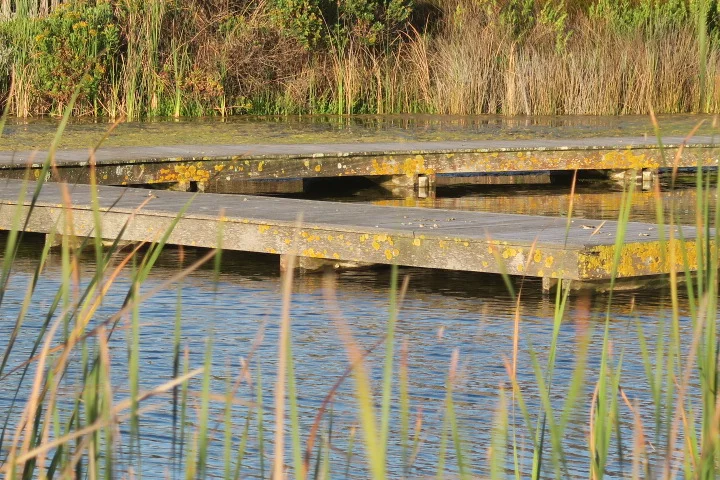Roast tomato salsa with yellow pepper, lime and coriander.
True confession: one of the things I've actually enjoyed about the water crisis is the chance to rethink kitchens and cooking. I love cooking for friends and have been incredibly lucky to live for years in one of the best places on the planet to be a locavore (to eat food grown as nearby as possible), so I'm always preparing fruit and veg that's in season in the neighbourhood. I also have no intention of giving up parties and teas and celebrations and retreating into some austere bunker mode, hunched over my water supplies, the cats prowling on sentry duty.
So how can we change our kitchens, our recipes and our entertaining habits so that we can go on having a life, spending time with friends and family, without feeling like collective water Grinches?
51. The obvious tip seen all over the internet: have more braais (barbecues). Get your potjie into the action. I rarely cook outdoors (read: never), so I stand to be corrected, but it seems that you could cook your food on the coals, then burn the paper plates and napkins afterwards. Note that it's possible to have great vegetarian and vegan braais (remember those cheese, tomato and onion braai sarmies from childhood?) -- not just a carnivore option.
Here's what I've done on the kitchen front (I'd love to hear what others are doing).
52. First thing was to retire my goblet blender. It takes way too much water to clean. It got replaced with a cheap and cheerful stick blender, which I use directly in whatever container I'm going to be eating my smoothie/soup in. Proceed with caution: you want something narrow and deep to avoid spatter.
There wasn't enough water in Cape Town to clean up this mess.
53. If rain is forecast, I get out my biggest pot to cook bulk soups and stews for freezing. Depending what your family eats, and whether you have fridge or freezer space, you could cook a week's worth of rice, pasta, pap, etc at a time -- anything that takes a lot of water and leaves a sticky pot. After the dirty pot gets the wet teabag or paper napkin treatment to clean most of the gunk off, I then set it outside to soak in the rain. Once it has some rainwater in it, I dash out with dishwashing liquid and a sponge, wash, then rinse in rainwater. (This is easy because I have a garden for chucking away the dirty water. Not a viable option for flat-dwellers, who may have to proceed to the next tip:)
54. Retire your big pots. Almost all my cooking is now done in non-stick frying-pans and saucepans. Try to get ones with deep, steep sides (surprisingly scarce). I know the magazines all say "get the best one you can afford", but I'd rather recommend that you don't buy the very cheapest, in case the lining peels off the first time you use it (this has happened to me). The one pictured at the top of this usually just gets wiped after use; I wash it about every fourth time I cook in it.
55. Remember the wok craze? If you have one, now's the time to dig it out. Basically treat it as a non-stick frying-pan with high sides. Remember it should be possible to clean all these with teabags, kitchen paper and only then, if needed, a little splash of water and dishwashing liquid. (The teabag tip is at the end of this post.)
55. Your partner in non-stick cooking is a whole bunch of those silicone spatulas. I once got given an indestructible one from Le Creuset (it's in the top pic), and it gets used to stir everything while cooking, to decant food out the pot for serving, to scrape the plates into the compost tub afterwards, and so on. I have several cheapo plastic ones as well, to make sure that every container has every possible bit of food residue cleaned out of them before washing.
One dish meal: stir-fried onions, garlic, celery, leeks, mushrooms, fennel, wild spinach, chard, basil and a purple cauli I grew myself. For vegans, add toasted seeds and nuts. For vegetarians, feta cheese. For carnivores, chicken strips added after the onion and garlic stage. Or just eat as is.
56. Hunt down the best one-pot meal recipes: the days of a separate dish for cooking meat and three pots for the veggies, plus a gravy-boat, are done. There are wonderful recipes for meals that combine protein, veggies and starch all in one pot: I typed "one pot meals" into Google and got "about 81 300 000 results (0,53 seconds)", so you are never going to run out of ideas. Many of these are also budget meals.
57. Likewise, get everyone in the family to think about eating everything in one bowl, rather than a flat dinner-plate and a side/salad plate.
58. Retire the salad bowl and plates. Instead of big leafy salads with soft lettuces, think about getting salads into meals via fresh salsas and sambals (this time, Google gave me "about 23 800 000 results (0,46 seconds)": for instance, a dish of chopped-up tomato, onion and cucumber, or a salsa of chopped fresh peppers, baby marrows and coriander, or grated carrot with ginger or orange zest or mint. These salad substitutes can used almost as garnishes on top of hot food.
59. I've almost completely replaced lettuce with rocket, which grows like a weed all over my garden. If you're lucky enough to have the same problem, simply take handfuls of rocket, chop roughly and sprinkle over everything savoury you eat. That's your raw greens taken care of.
60. Microwave foods like butternut, pumpkin and potato rather than cooking them in pots (if this is new to you, do a bit of Googling first -- cleaning exploded spud off the inside of a microwave is a rite of passage to be avoided). In fact, if you have a microwave, use it for as much cooking as possible. You'd be amazed at what you can do -- scrambled eggs in soup bowls, for instance. One less pan to wash.
61. If you DO have a pan to wash, after you've tried the teabag trick, sprinkle a little of your magical all-purpose Swiss Army bicarb on the bottom, add the merest splash of water and let it stand for a while before giving it a gentle scrub. Lifts off even burned-on milk or egg residue with no fuss.
62. All over Indonesia and many other tropical places, banana leaves are used as plates for even wet, soupy dishes -- straight from the table to the compost heap afterwards. Surely this must be possible here (eyes the KZN coast). Any ideas for cheap, clean sources? Let me know.
I got these banana boats (on the right), compostable coffee cups (and a few compostable soup bowls for good measure) from Merrypak in Ndabeni. If this looks like advertising, I should say that while they have some EXCELLENT green and waterwise stock, I was also shaken to discover just how many single-use items abound in the catering industry.
63. In the absence of leaf plates (not everyone will be as enchanted by this idea as I am), I had to think hard about how to serve guests food, especially at parties. I've found a fairly inexpensive solution: the bamboo "banana boats" above. They hold a nice portion of even wet and messy finger-foods without leakage, the sides prevent your falafel from leaping to escape, they work for sit-down and stand-up eating, and can go straight into the compost heap at clear-up time.
64. I also laid in some compostable coffee-cups so I can go on running workshops and training without angsting about cups. These I'll probably burn after use. Good option for workplaces where coffee-cups stack up in the communal sink. I've also added a few to my out-and-about basket to use in place of water glasses.
65. The biggest water-wise tip in the kitchen? Don't. Waste. Food. Ever. And that's a topic for a blog itself. Coming soon.
66. Related to this is the issue of garbage: if you're used to composting and recycling, you need to head guests off before they start hunting for your rubbish bin. Nowadays when people offer to help clear up, I ask them to scrape every little scrap left on their plates into the compost tub.
67. If you're still using your dishwasher (and there was considerable debate about the post suggesting that dishwashers use less water than washing by hand), the general consensus is that this is a water-saving option only if you don't have to first rinse those plates. So scrape, scrape, scrape, wipe with used napkins and those teabags (that tip is turning into a gem).
68. Something else well-meaning folk don't think about: if your host has served you dinner on regular crockery, and you leap up helpfully and start stacking dirty dishes, someone will have to scrape and wash both sides. Aaargh. Carry plates one by one into the kitchen and scrape carefully before stacking. If space is limited, simply stand by and offer chocolates instead.
69. I've sort of said this already, but don't stop having a social and family life because of the water crisis. This could be an opportunity for members of your family to work more closely together preparing meals, to discover new recipes, and to have friends round more often. If you're water-resilient, your friends dependent entirely on municipal water will be especially delighted to get invitations.
And a final random "tester" tip:
70. On the subject of laundry (again), my washing-line experiment, planned to coincide with Friday night's rain, was hugely successful. I stain-and-spot-treated my clothes, pre-soaked them in my trusty cooler-box with with biological washing-powder and just enough warm water to wet everything through, then hung everything out on the line and crossed fingers there'd be enough rain to give everything a thorough wash and rinse. (I also hung out all my used towels, which were getting a bit lively). Now that everything has dried out (it took about a day), I can report that it worked a treat. No stains, and everything is fresh and clean. This, however, depends on the rain actually arriving and then staying, so it's a bit of gamble. We had about 2 hours of steady soaking, so I got lucky.
















